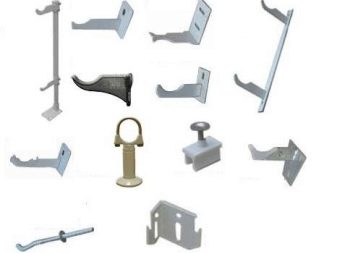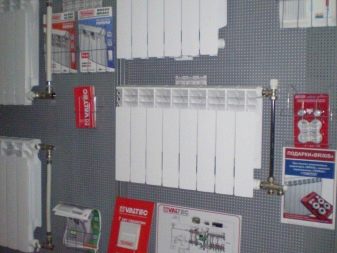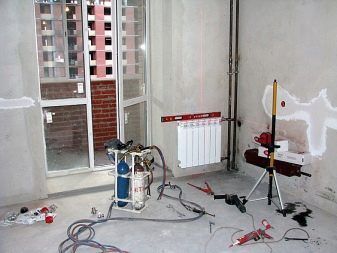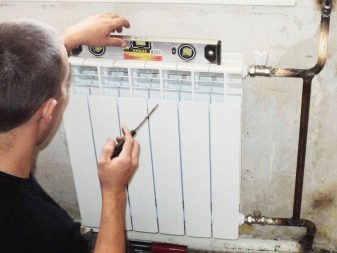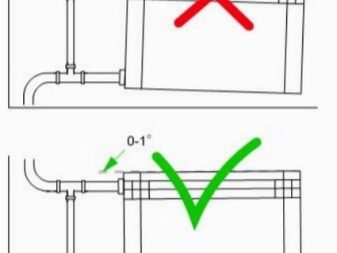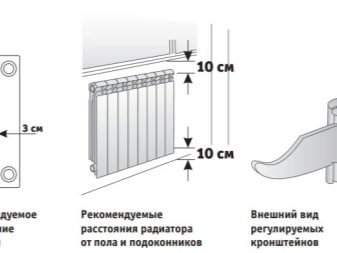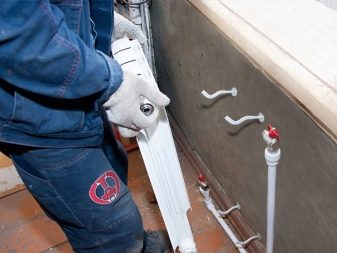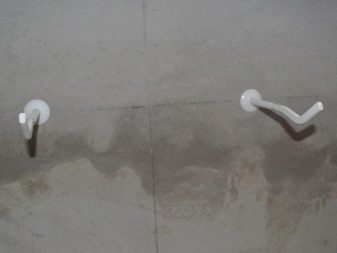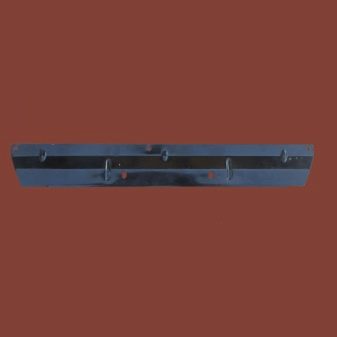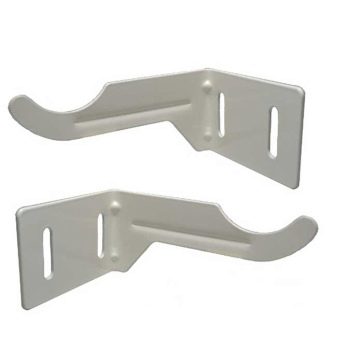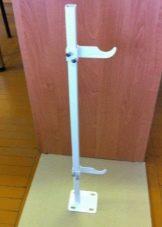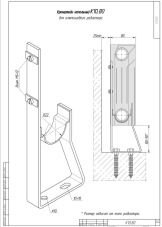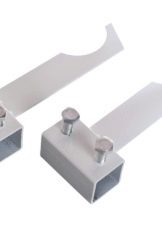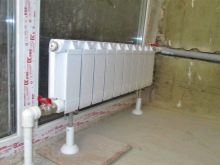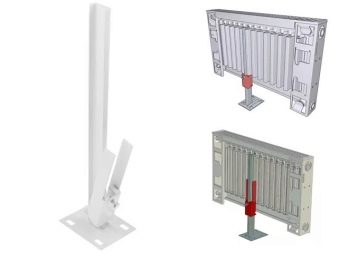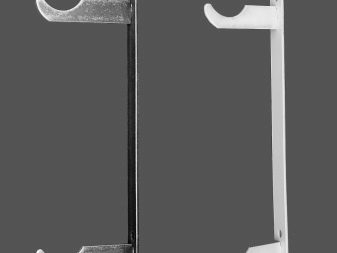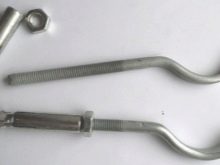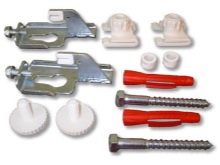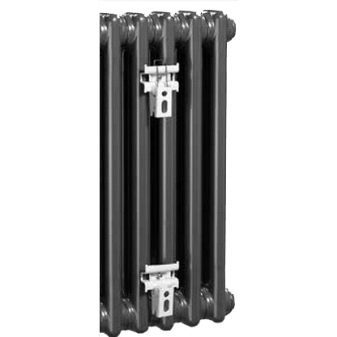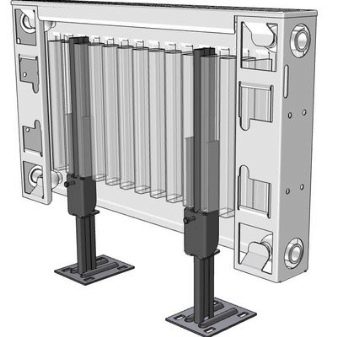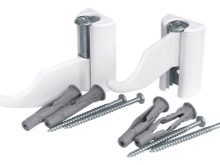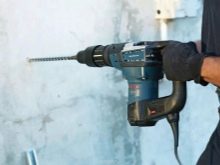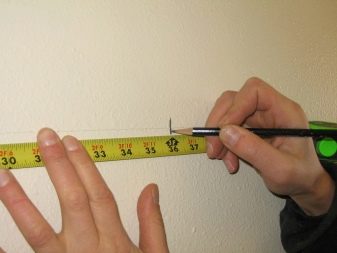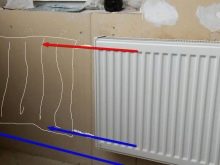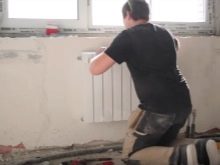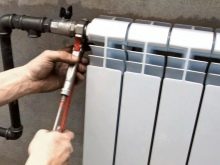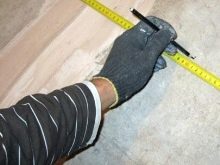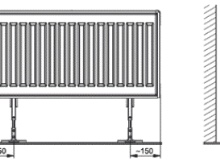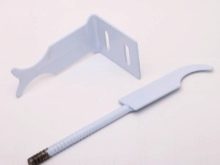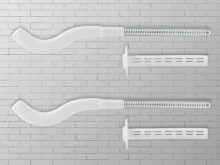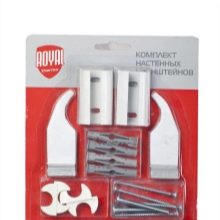Arms for radiators: types and features of application
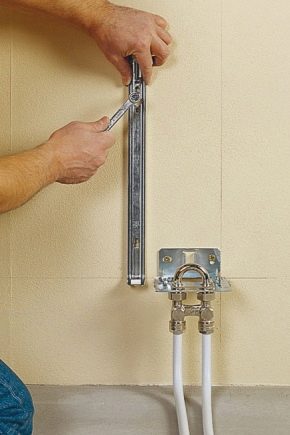
The heating system in a residential area is an important component, without which its operation will be impossible. In the role of elements that provide heating of housing, various devices and structures can be used, including radiators, which, in turn, require reliable fasteners - brackets, which guarantee durable operation and high-quality installation.
Requirements and markup
Practically every owner of a city apartment or a private house may face the question of replacing or installing radiators.Such work can be entrusted to professionals, as well as perform them yourself.
In any case, the installation of the radiator will be preceded by the purchase of the product and the choice of the method of its location.on which will depend on the type of fastener. In such cases, in most cases, brackets are used to fix the heating structure in the right place. They are clamps made of various materials, which are fastened to the wall, or they act as parts that provide the floor layout of the heating device.
To perform installation work of any kind there is a list of rules, and the installation of radiators is no exception. The technical passport of each clamp made in accordance with GOST contains instructions and recommendations regarding the operation of the bracket.
But in order to eliminate the risk of errors that may adversely affect the quality of installation work, it is still necessary to familiarize yourself with the rules prescribed in the SNiP.
It should highlight the basic rules:
- Hanging a wall-mounted radiator is necessary, giventhat the central axial vertical window will coincide with the center of the structure. The maximum level of deviation from the value can be 20 mm.
- Based on the existing standards, the horizontal size of the radiator should be equal to 50-75% of the dimensions of the window. Such information is advisory in nature, but the fastening of a small device will contribute to a small heat transfer.
- The minimum distance from the floor to the heating radiator should be 60 mm. This refers to the gap between the finish coating and the lower edge of the radiator.
- It is recommended to leave a gap between the wall and the battery of 30-50 mm.
- The distance from the window sill to the radiator should not be less than 50 mm.
- The fundamental factor in the installation is the number of latches used for installation. They must be counted, taking into account the number of sections of the device. For 8-sectional unit is to get 2 brackets for installation at the top, and one is located at the bottom. Increasing the number of sections, should increase the number of fasteners.
- When installing the floor heating devices, one should adhere to the following calculations: for a 6-section device, two points of support are needed, the number of fastenings increases when adding sections.
To hang or install a radiator without errors, you need to perform a preliminary marking of the locations of the future location of the fasteners for the device. With a guide to the middle of the window opening, a vertical line is drawn on the wall.
Then you can resort to two options for performing work:
- If there is a lower wiring, then a horizontal line is drawn, which will correspond to the upper edge of the device.
- In case of installation of the device with lateral connection of pipes, a horizontal strip from the upper supply pipe is drawn.
After that, a reference to these lines is used to mark the location of the brackets for the device. You can attach parts and measure the distance between elements.
Types and device
Heating units can be made of steel, copper, cast iron, aluminum and bimetal. Based on the method of their installation, there are two types of used radiator brackets.
Wall mounted
Wall mounted devices that include the following parts:
- pin (anchor) clamps (short or long);
- elements with a mounting plate that can be adjusted in height (such products will help to hide the defects and surface irregularities);
- corner elements, which are most often used for batteries with low weight and minimum dimensions;
- anti-noise holders that have a rubberized coating.
Outdoor
Mounts for floor mounting heating units consist of:
- coasters with soles recommended for large and heavy radiators;
- additional parts used with wall fasteners;
- racks with hooks, which are fixed to the floor and to the wall.
In addition, floor clamps are height-adjustable products - parts in the form of a stand without fixing, brackets with retaining parts, such as a chain, holders on a tripod, scrolling to the floor or located without fastening.
The choice of floor installation method of heating devices in the room instead of the usual attachment to the wall is based on a number of reasons.
In this list, you can highlight the following points:
- inconsistency of walls with safety standards, for example, when using drywall;
- the presence of panoramic windows;
- the specifics of the interior planning of the house or apartment;
- lack of space for radiator installation;
- the need for reinforced clamps for units with high weight.
Battery Types by Material
Today on sale you can find models of heating devices, different among themselves not only in configuration and heat transfer index, but also in the material used for the manufacture of devices. On this basis, and brackets for radiators are classified into different types.
Necessary fixture
Fasteners for cast iron batteries have their own specific features, because cast iron radiators are quite heavy.
The following fixers can be distinguished for such devices:
- cast iron clips;
- steel adjustable elements;
- steel holders;
- brackets on steel strip.
All types of brackets for cast iron aggregates are suitable for concrete foundations and masonry. To do the work with wooden surfaces or walls made of plasterboard, it is necessary to opt for floor clamps.
Aluminum constructions for heating and bimetallic radiators have a smaller mass in comparison with cast iron products, therefore for their installation other brackets are used:
- corner elements of steel - such products are universal or reinforced configuration;
- pin round or molded latches with dowels;
- wall fasteners with plastic gasket.
Installation of radiators made of steel using different fastenersSince the units are tubular and panel, based on the difference in configuration, different brackets are required. The first type of devices is fixed with special hooks, which are corners made of metal. There are also models of panel-type heaters, which are installed using vertical strips with clamps. Tubular-type radiators are usually attached to the wall with plastic clips at the bottom and two anchor points at the top of the structure.
Mounting methods
Before you begin the installation of the radiator, you must perform all the necessary work of a preparatory nature. In some cases, it will be necessary to paint the product, install a thermostat, a Mayevsky crane, a cap.
To install the purchased device you will need the following tools and products:
- suitable brackets and dowels for fixing;
- perforator with a drill suitable to the raw materials from which the walls in the dwelling are made;
- Roulette, level and ruler.
It is recommended to perform work according to the following scheme:
- The primary task is to prepare the base for the installation of the heating structure. Walls may need plastering, wallpapering or painting.
- After that, the markup for fixing clamps.
- Holes are made in marked places with a perforator.
- The control line location of fasteners. They must be strictly along one straight line.
- After that, the radiator is hung, and the fixing reliability is checked by exerting a small force on the unit.
- Checks the horizontal placement of the radiator using a level.
- Then work on the eyeliner pipes and their connection with the heating unit.
The method of floor installation of devices includes the following work:
- purchase of brackets and equipment;
- markings on the floor;
- drilling holes and mounting clamps;
- installation of units and eyeliner pipes.
Manufacturers
Among the manufacturers of components for heating devices are the following brands:
- Lion Company engaged in the production and sale of fasteners for bimetallic and aluminum heating structures, brackets for cast iron products, floor brackets for heat shields. Floor-mounted universal brackets are recommended for use with all types of radiators, the height of which varies from 400 mm to 554 mm.
- Italian trademark Omec offers anti-noise, wall and steel fasteners.
- Konner Chinese Products remarkable for its range, among which can be distinguished floor brackets used to strengthen the bottom of the device. Products are made of steel.
- Vyatkaspetstsentr LLC - a Russian company that sells products, among which are fasteners for panel, aluminum and cast iron radiators of such popular brands: Alukal, Baykan, Elegance, General, Sira.
- Royal Thermo brackets can be used both for heating products of the same name brand and for other bimetallic batteries, the weight of which will be no more than 70 kg.
- Russian company Tiarun realizes anchor fasteners for heating devices made of galvanized steel. Products are painted with epoxy enamel.
Recommendations
When planning the purchase of brackets for radiators, it is recommended to focus on the following product characteristics:
- Of great importance is the composition of the alloy from which the product is made. It must have high strength and be non-toxic, since the parts will be used indoors and heated by heating devices.
- To the purchased products served as long as possible, it is worth buying brackets, the surface of which was specially treated with means that protect against corrosion and rust formation. However, painting the product will not be enough, since the product must be galvanized.
- A very important criterion for the choice of brackets are the parameters of the element - the length, thickness and maximum load indicators.
- The positive features of the product should include the presence of a coating that reduces noise.
- The part should give the opportunity to adjust the distance between the device and the wall or floor.
To learn how to hang the radiator yourself using brackets, see below.
